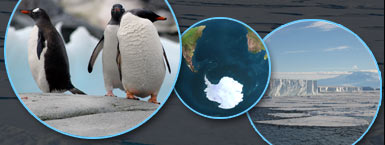Antarctica's Ocean Circulation
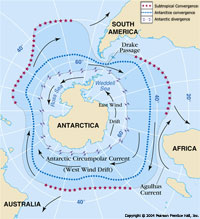
Enlarge image for caption
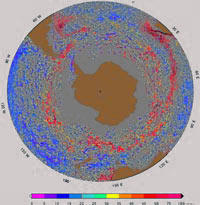
Enlarge image for caption
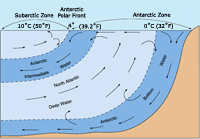
Enlarge image for caption
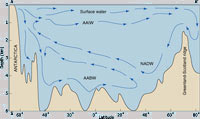
Enlarge image for caption
Oceanographic Circulation: The Antarctic Circumpolar Current (ACC) is the largest wind-driven current on Earth. It is the only current that goes all the way around our planet and connects the Atlantic, Pacific, and Indian Oceans.
It is driven by strong westerly winds and creates some of the roughest seas in the world that are notorious to sailors. It was discovered by Edmund Halley, the British astronomer, during the expedition of the HMS Paramore in 1699-1700. Later, James Cook in 1772-1775, and James Clark Ross in 1839-1843 both described the ACC in their journals.
The ACC is a massive flow of water that acts as a barrier separating the Southern Ocean from more northern oceans. The current extends from the sea surface to depths of 4000 m (more than 2.5 miles) and can be more than 120 miles wide. It is a very cold current with temperatures ranging from –1 to 5°C depending on the time of the year, and with speeds up to 2 knots (2.3 miles per hour or 3.7 km per hour). This is the same speed as a brisk walk.
Antarctica is also the birthplace of deep ocean waters that make up part of the global Ocean Conveyor. Water that flows at the bottom of the ocean is formed on the continental shelf, particularly in the Weddell Sea and the Ross Sea. As ice forms the water becomes saltier. As the ice drifts and gaps open up, the water loses heat and gets colder with temperatures from -0.9°C to +0.4°C (30 to 32°F). Its density increases to become the densest water in the world and it sinks to the bottom of the ocean (below ~4000 m) to flow throughout the world’s deep ocean.
Different weather conditions a little further north at 45-55°S cause another water mass, called Antarctic Intermediate Water, to form. In this area, precipitation is greater than evaporation, so the salinity of the water is low. However, the water gets cooled and sinks to flow through the ocean northward at depths of 600-1000 m.
